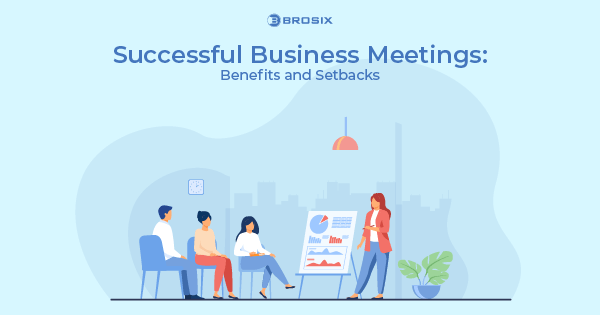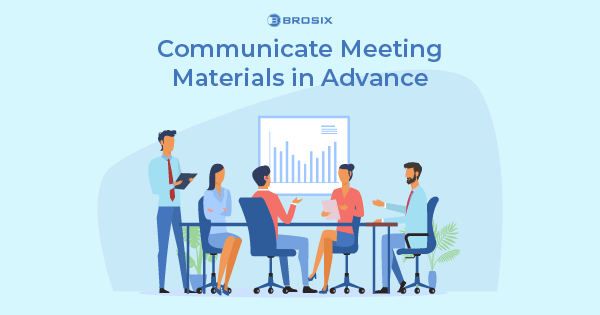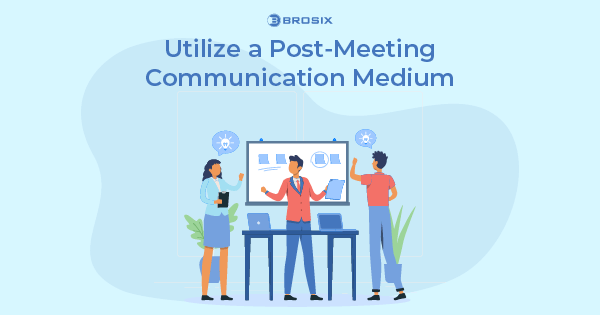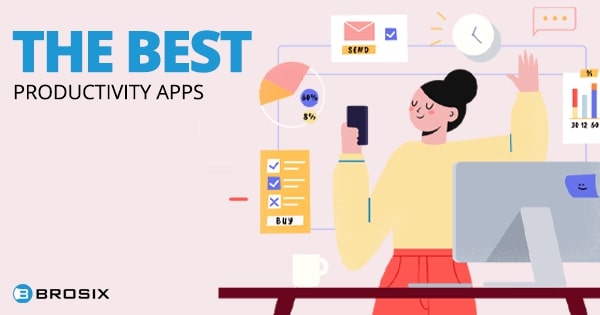Meetings are a fact of life in the business world. So much so that upper management spends more than 50% of their time in meetings. Altogether, meetings account for 15% of an organization’s collective time.
If your business meetings are even the slightest bit ineffective, that’s a lot of wasted time.
That said, meetings likely aren’t going anywhere anytime soon. As the need to enhance efficiency, productivity, and the bottom line is ever more important, meetings play a major role in helping business leaders and employees discuss company processes and make decisions.
It’s necessary to examine the types of business meetings and what makes them fail. This way you can focus on improving the effectiveness of your meetings, making them worthwhile for each attendee and the company.
What Is a Business Meeting?
A business meeting is a gathering of stakeholders for the purpose of discussing company-related matters and making decisions regarding the workplace. Business meetings serve a variety of functions, including forming a consensus to make a decision, informing on decisions taken by management, discussing organizational goals and objectives, planning strategically, solving problems, and carrying out team building activities.
Business meetings take place on a regular or ad hoc basis and are generally conducted in person in an office. Now, however, with the rise of technologies such as real-time business instant messaging and video conferencing tools, participants can join these meetings from anywhere.
Successful Business Meetings: Benefits and Setbacks
Meetings are a fundamental business process that, when run effectively, benefit the employees involved, internal workflows and processes, and the organization as a whole.
The benefits of business meetings:
- Meetings enable the communication of vital business-related matters
- Meetings give employees a voice
- Meetings allow employees to develop vital professional skills
- Meetings boost team momentum and camaraderie
All too often, though, meetings fail to produce a result or deliver on their aims. Why?
- Meetings may lack structure
- Meeting objectives are poorly communicated
- Meeting time is often wasted
- Too many meetings detract from employee productivity
Despite the stigma surrounding business meetings and the drawbacks of running them poorly, it’s possible to make them work better. With some effective meeting management tips, advice, and a few best practices, you can run more productive meetings, and even have fewer of them.
10 Ways to Run Productive Business Meetings and Have Fewer of Them
Define the Agenda
Meeting goals should be measurable but obtainable. As engagement begins to wane after 30 minutes, cluttering the agenda with too many objectives or unachievable aims only drags out the meeting, reducing its chances for success.
Try to stick to one overarching topic. In the case you have to include multiple points, keep them concise. And be specific with your agenda items. Ultimately, you’re going to communicate the agenda to each participant, so the purpose of the meeting should be clear to everyone involved.
Be Kind With the Meeting Hour
Always try to schedule meetings at a humane hour. In some companies, the first 30 minutes of the workday or lunchtime are a no-go for business meetings. That said, with more and more meetings taking place remotely, it may be impossible to choose a time that allows everyone at least a cup of coffee first. In that case, rotate the meeting schedule so it isn’t always the same participant joining at an awkward hour.
Choose the Right Participants
Sometimes it’s necessary to extend your meeting invitation far and wide. After all, great ideas can come from anyone in the organization, not just management. But more often than not, conducting effective meetings requires downsizing the participation space.
Inviting people to the meeting who have little relevance to the agenda is a drain on their energy and takes time away from tasks and responsibilities for which you hold them accountable. Plus, they’ll be expected to contribute on topics that either don’t involve them, or they know little about. It’s a lose-lose.
Communicate Meeting Materials in Advance
Like most business processes, running an efficient meeting requires some groundwork. Distribute the agenda in advance of the meeting. Include any preparatory work such as tasks, presentations, reading material, or brainstorming.
“Sharing agendas, along with any relevant documents for pre-reading, is a great way to improve meeting effectiveness. Spending time prioritizing agendas and putting pre-reading together ensures that meeting time is used for thoughtful discussions on all critical topics, rather than one-way updates.” – David Kolodny, Founding Partner, Wilbur Labs
Best practice: Establish a chat room or thread with the title of the meeting and add each relevant participant. This provides a shared space for pre-meeting file transfers, questions, and discussion.
Before the meeting, send out a broadcast message to your attendees reminding them of the meeting itself, and any required prework.
Stick to the Meeting Script
Once the meeting’s kicked off, it’s down to you to ensure it progresses in a timely and productive manner. To keep your meeting on track, follow the agenda and start and finish on time.
Follow the agenda. Wandering off-topic derails you from reaching your meeting objectives. To keep your participants zeroed in, visibly display the agenda on a whiteboard or projector. Don’t hesitate to refuse to discuss topics not on the agenda. If someone does stray from the topic, kindly mention that unrelated subjects can be discussed after the meeting, time-permitting.
Start, and finish, on time. Cue participants that the meeting is beginning by shutting the door or standing up. Allocate a set time for each agenda item and use a timer if necessary. Remind anyone giving a presentation of their share of the allotted time. If it appears that your allotment is insufficient, inject yourself into the conversation and suggest a follow-up after the meeting.
“One of the best tangible practices to running an effective meeting is reminding everyone at the beginning that the meeting has a hard stop. Keeping to a hard stop ensures that your team has the ability to not only schedule in their remaining tasks for the day, but prioritize completing each one.” – Deborah Sweeney, CEO, MyCorporation
Provoke but Guide Participation
According to a Harvard Business Review study, only 35% of meeting participants feel they’re able to regularly contribute during meetings. To run a successful meeting, you need to provoke greater engagement, especially among women, introverts, and remote workers. You also need to guide it in a way to ensure an efficient meeting flow.
Instead of diving straight into business, open the meeting with a quick tour of the room. That allows you to check in with the team and set the stage for a productive discussion.
Delegate responsibilities. Assign roles such as facilitator, note-taker, presenter, and follow-up to encourage those who may take a passive position during meetings.
Don’t outright ban devices like mobile phones. Instead, use them to your advantage. If it’s a creative meeting, do a guided brainstorming where participants are given set minutes to search the internet on a relevant topic. For example, what competitor strategies or campaigns could be relevant to the business? Or, what’s the competition saying on a given topic?
Best practice: If you’re worried about participation during a remote meeting, include collaboration features like screen sharing or whiteboards. Collect questions in a common chat and designate a team member to monitor the space and share the questions at the end.
Record the Meeting Notes
Notes. Minutes. Actions. Whatever you call them, it’s critical to have a record of the meeting takeaways, as well as how you got there. Assign someone to take note of any key discussions, ideas (big or small), unresolved questions, and actions to be taken. So that everyone’s on the same page, take and display the notes with a visual collaboration tool, such as a whiteboard. To ensure their accuracy, and provide a vital backup, capture the meeting with a recording device.
Make a Strategy to Deliver on Your Action Points
Meetings don’t end once you reach time or end the conference call. Rather, a meeting’s conclusion signals the beginning of the real business at hand.
If you’re leaving a meeting with actions to be taken, develop an appropriate strategy to achieve your deliverables. You don’t need another meeting to unpack your meeting. Just a few quick minutes to divvy up tasks and establish timelines. Schedule any follow-ups immediately or, if you’re pressed for time, within 24 hours of the meeting’s end – when everything is still fresh.
Utilize a Post-Meeting Communication Medium
Sometimes big ideas arise after a meeting has wrapped up. There may be follow-up questions. Or you may want to share a presentation that wasn’t distributed beforehand.
Remember that chat room or channel you established before the meeting? It’s the perfect place to keep up the conversation, ask and answer follow-up questions, and check in with employees on post-meeting task progress.
Best practice: Team communication tools offer a host of spaces for effective post-meeting communication. Upload meeting notes or other materials in your shared chat space. This way, the entire meeting group can pose follow-ups, update on progress, and stay collectively informed. If you need to deliver a quick reminder, bulletin, or motivational quote, send a broadcast message.
Solicit Feedback
Successful businesses evaluate customer satisfaction to build off the positives, right the negatives, and deliver a worthwhile user experience. Meetings are no different.
“In the spirit of continuous improvement, ask your coworkers after the meeting if they have any feedback on how the meeting was run. For recurring meetings, you’ll want feedback on the format, agenda, flow etc, so you can adjust accordingly and make a better experience moving forward.” – Alexis Wirth, Operations Manager, Swenson He
You can use a simple form to collect the feedback, a suggestion box, or have an informal conversation with the participants after the meeting, either in person or in the group chat.
The Takeaway
Running effective meetings isn’t unmanageable. But nor is it down to luck. By following these tips and carefully considering your meeting prep, engagement strategies, and approach to post-meeting productivity, you can conduct successful business meetings and have fewer of them.
[bctt tweet=”How to Run Effective Business Meetings (and Have Fewer of Them)”]
If you’re looking for some extra help, consider Brosix. An all-in-one business instant messenger, Brosix provides the communication and collaboration tools necessary to run effective meetings from start to deliverable. Give it a try!
FAQ
What are the different types of business meetings?
Some of the business meeting types are:
- decision-making meetings
- brainstorming meetings
- status update meetings
- problem-solving meetings
- training sessions
- planning meetings
- team-building meetings
What is the importance of having a meeting agenda?
Creating a meeting agenda is important as it aids in maintaining a more centered discussion, guaranteeing the inclusion of essential subjects, and facilitating participants’ preparedness beforehand.
How can I make my meetings more successful?
Enhancing the success of your meetings involves fostering a positive and inclusive atmosphere, promoting collaboration and active engagement, delivering clear and concise information, and ensuring follow-up on action items or subsequent steps.
How can I use technology to improve my business meetings?
You can use technology to improve your business meetings by utilizing video conferencing, online collaboration tools, or project management platforms. Thus, you improve communication and work efficiency.
How can I reward and recognize participants in business meetings?
You can reward and recognize participants in business meetings by acknowledging their contributions, praising their efforts, and expressing gratitude for their involvement. This can help motivate participants and foster a positive working environment.
Why are meetings important in running a successful business?
Meetings are important in running a successful business because they provide a platform for communication, collaboration, decision-making, and problem-solving. They help ensure alignment among team members and set the path toward common goals.
Can virtual meetings be as effective as in-person meetings?
Yes. Virtual meetings can be just as effective as in-person ones if they are conducted properly. By using video conferencing and other team communication tools, participants can engage in real-time discussions, share documents, and work together on projects.











